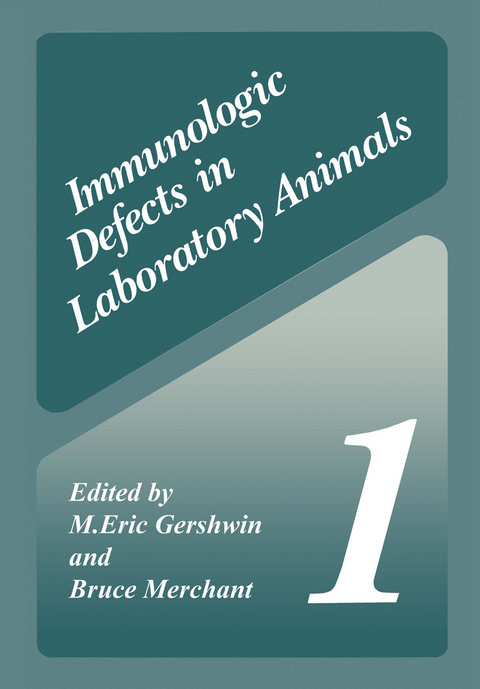
Immunologic Defects in Laboratory Animals 1
Springer-Verlag New York Inc.
978-1-4757-0327-6 (ISBN)
I. Defects of Immune Maturation.- 1 Immunologic Unresponsiveness in Fetal and Neonatal Mammals: A Paradigm for Immune Deficiency Diseases?.- II. Incomplete Immune Function in Normal Animals.- 2 Genetic Regulation of High and Low Immunoresponsiveness.- III. Immunohematologic Abnormalities.- 3 Hematopoietic Stem Cell Differentiation and Its Role in Osteopetrosis: Immunologic Implications.- 4 The W/Wv Mouse: A Model of Bone Marrow Failure.- 5 The Murine Chediak-Higashi Mutation and Other Murine Pigmentation Mutations.- 6 Cyclic Hematopoiesis in Gray Collie Dogs.- IV. B-Cell Defects.- 7 Inherited Dysgammaglobulinemia of Chickens.- 8 B-Lymphocyte Development and Heterogeneity: Analysis with the Immune-Defective CBA/N Mouse Strain.- 9 The Significance of Hereditary Asplenia for Immunologic Competence.- V. T-Cell Defects.- 10 Deficient and Sufficient Immune Systems in the Nude Mouse.- 11 Athymic Nude Rats.- 12 The Hairless Immune-Deficient Guinea Pig.- 13 Hereditarily Athymic-Asplenic (Lasat) Mice.- 14 Immunologic and Hematologic Deficiencies of the Hypopituitary Dwarf Mouse.- VI. Macrophage Defects.- 15 Inherent Macrophage Defects in Mice.
| Zusatzinfo | 22 Illustrations, black and white; 380 p. 22 illus. |
|---|---|
| Verlagsort | New York, NY |
| Sprache | englisch |
| Maße | 178 x 254 mm |
| Themenwelt | Veterinärmedizin |
| ISBN-10 | 1-4757-0327-9 / 1475703279 |
| ISBN-13 | 978-1-4757-0327-6 / 9781475703276 |
| Zustand | Neuware |
| Haben Sie eine Frage zum Produkt? |
aus dem Bereich


